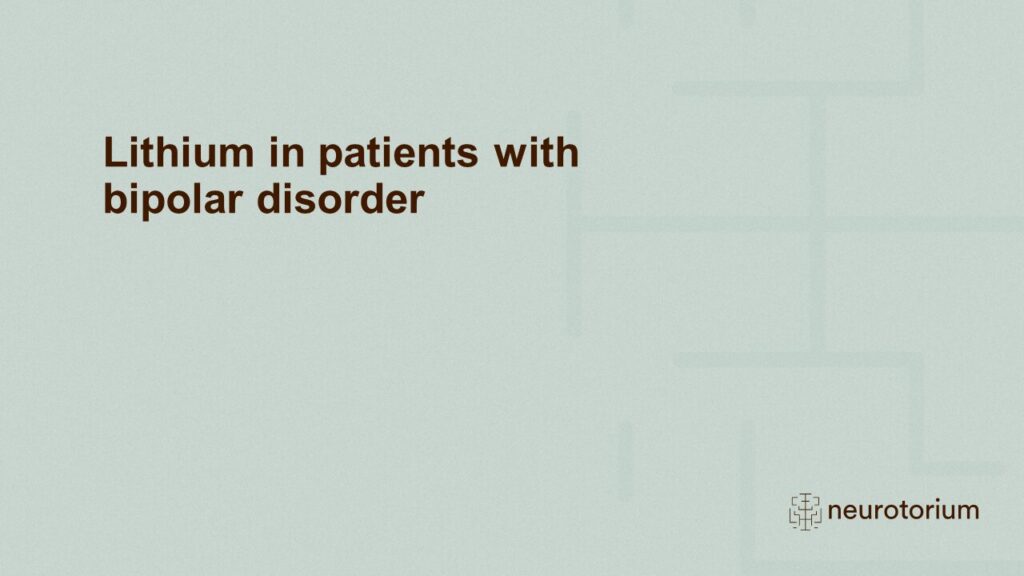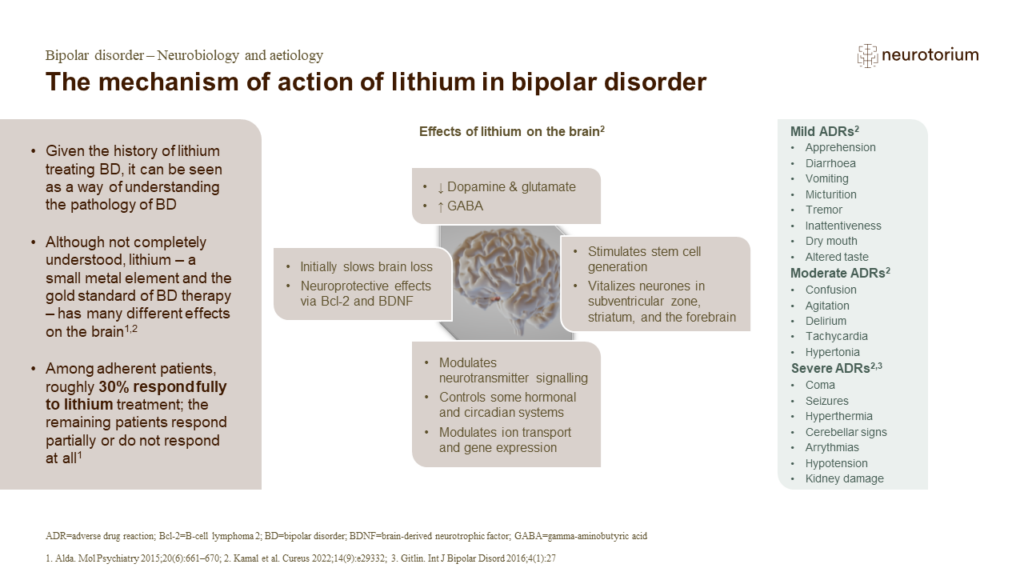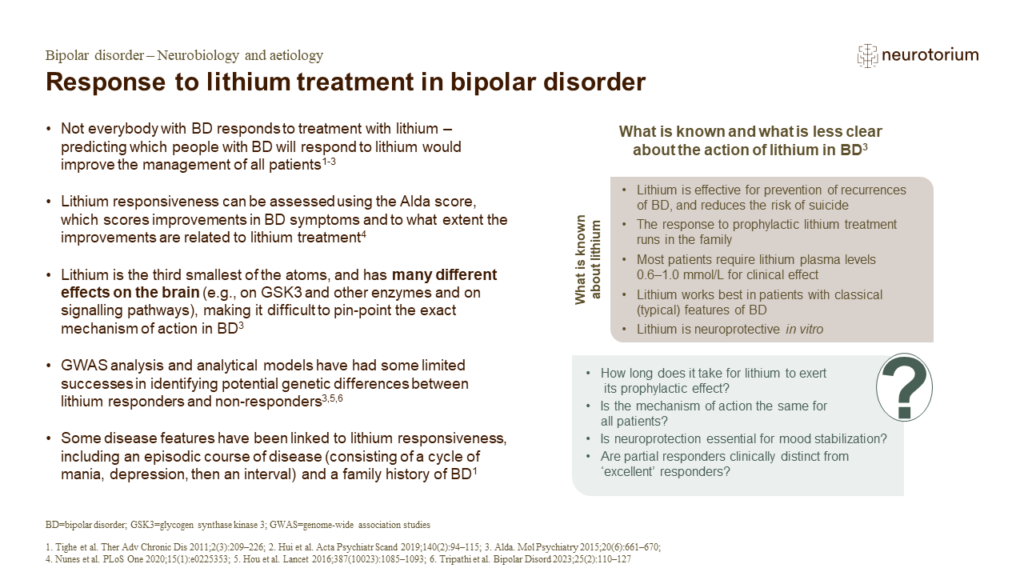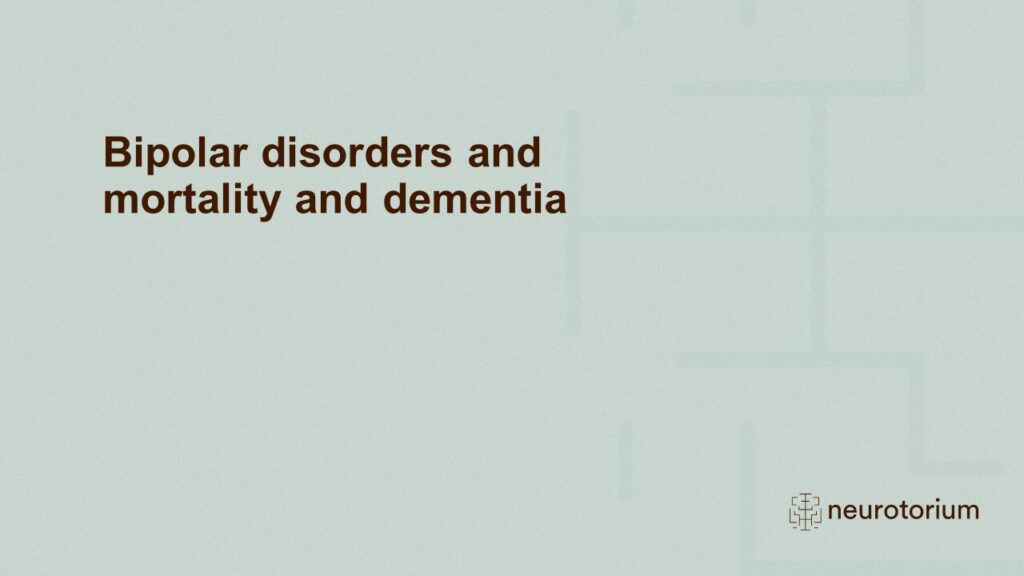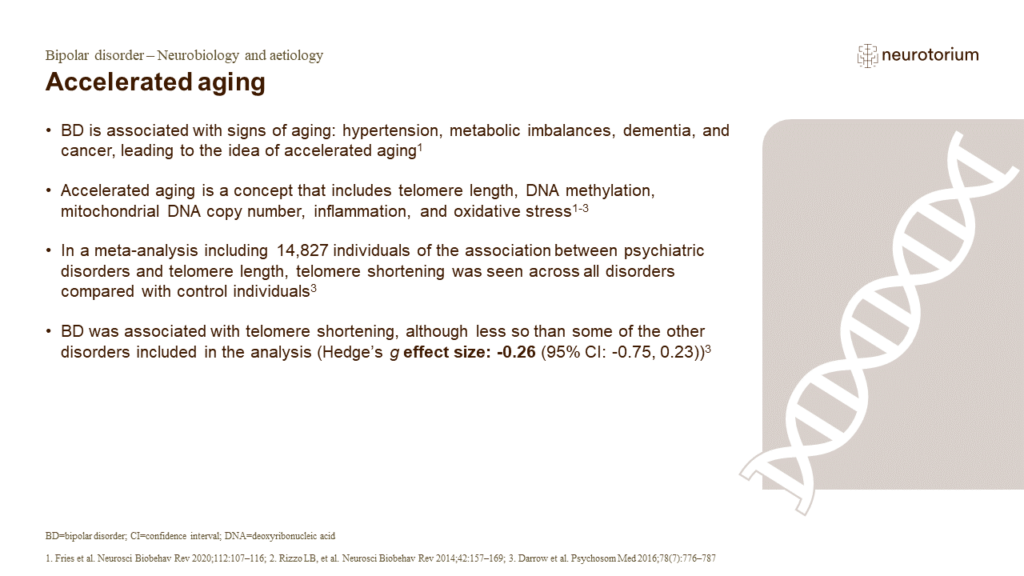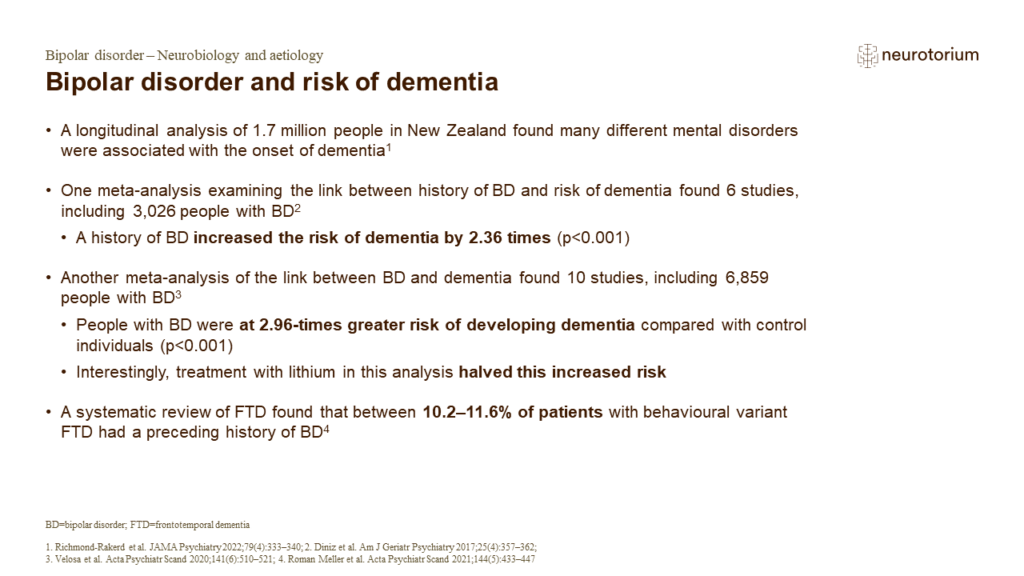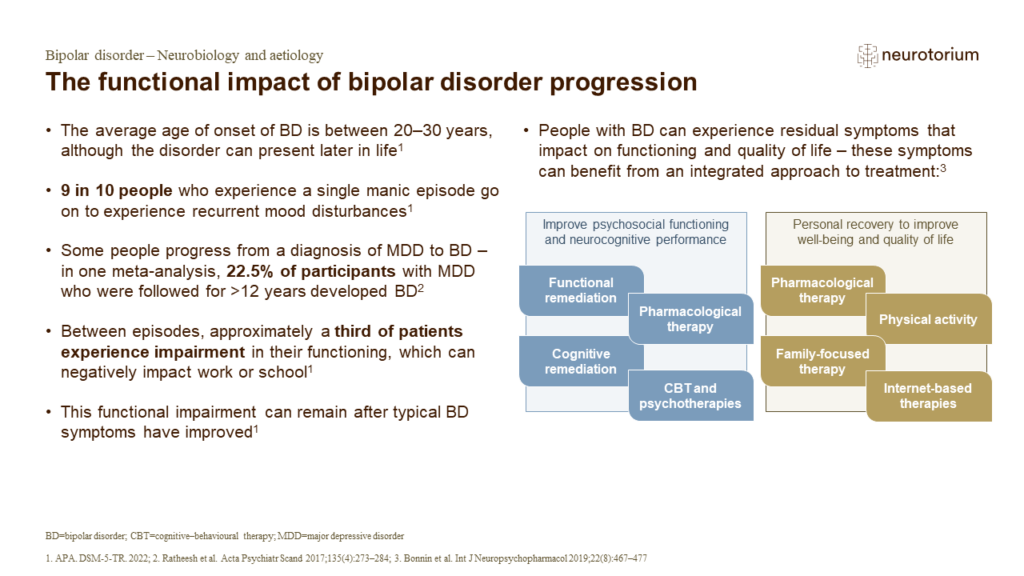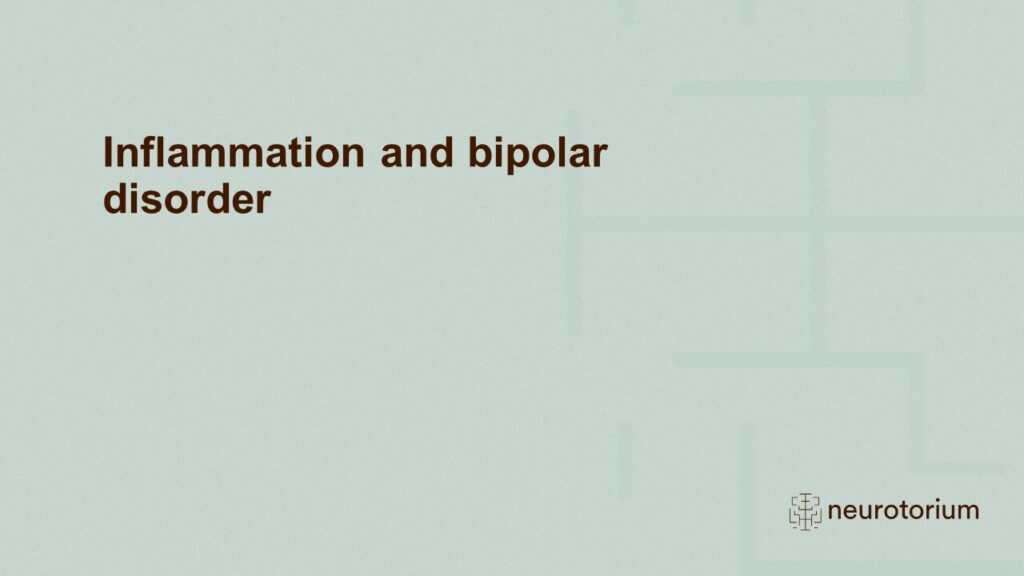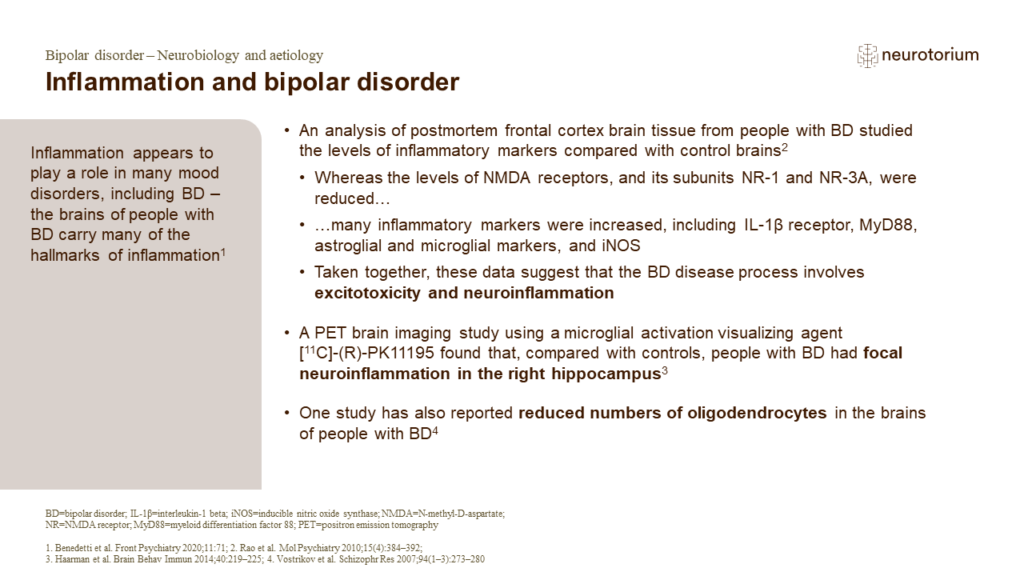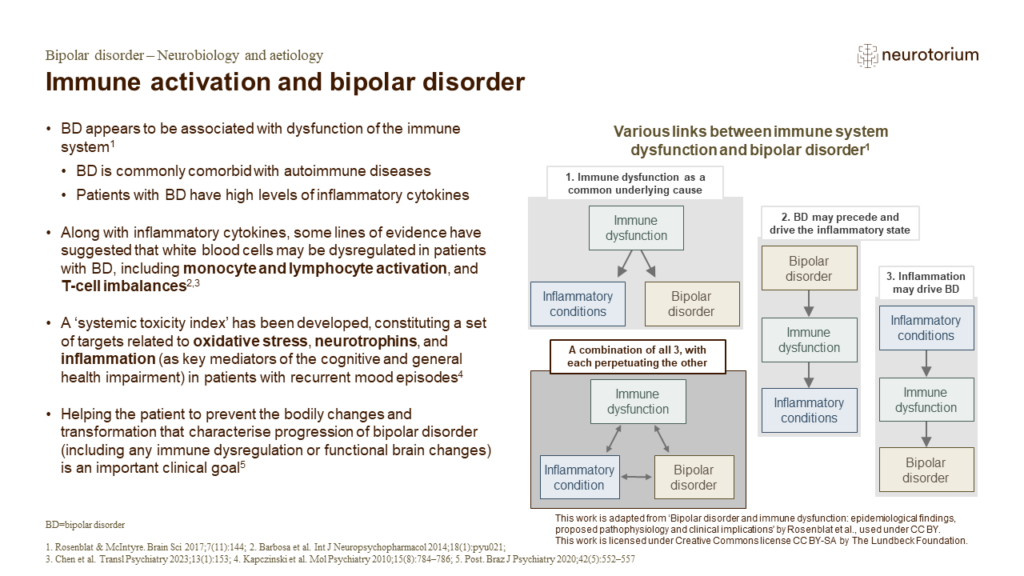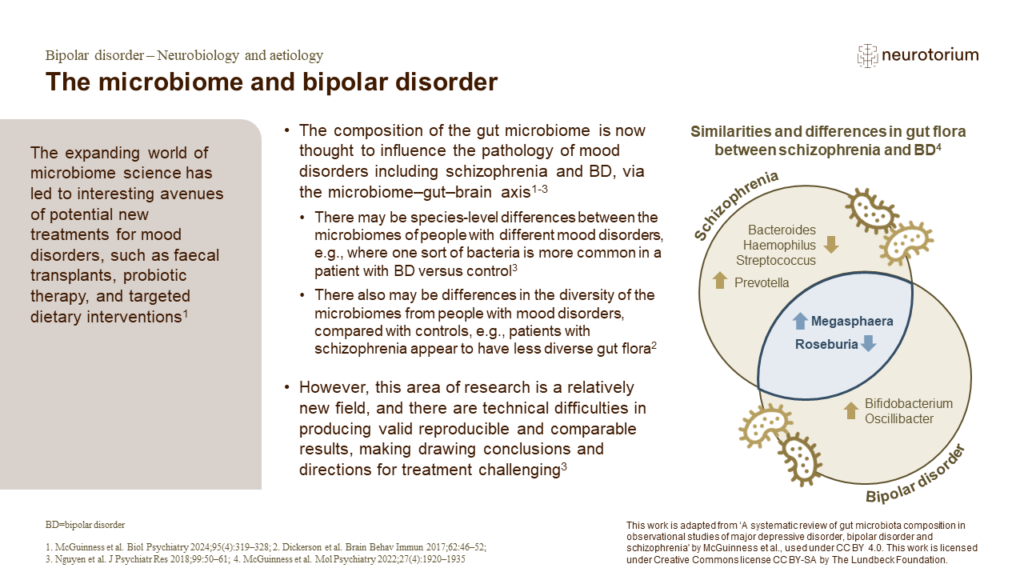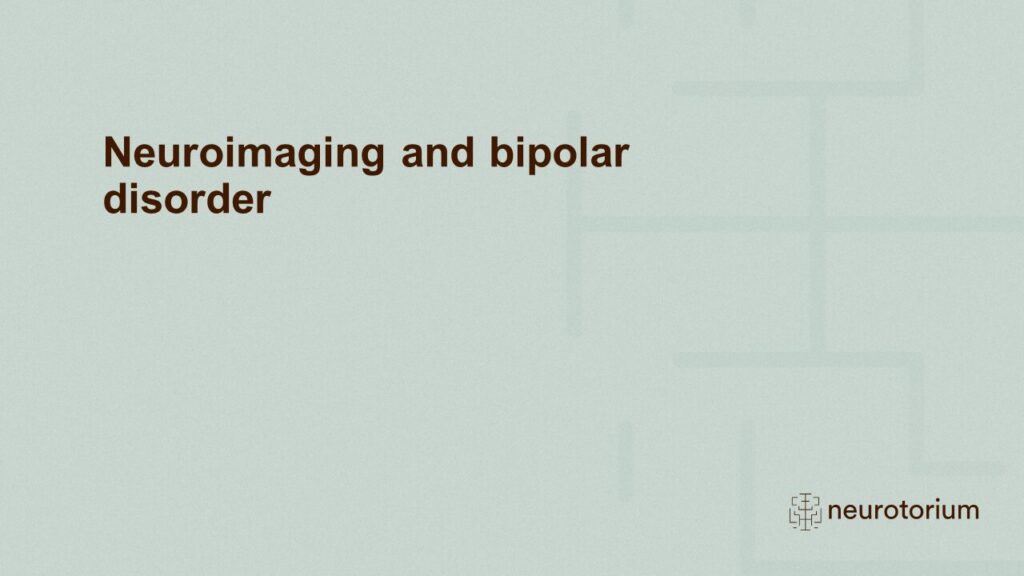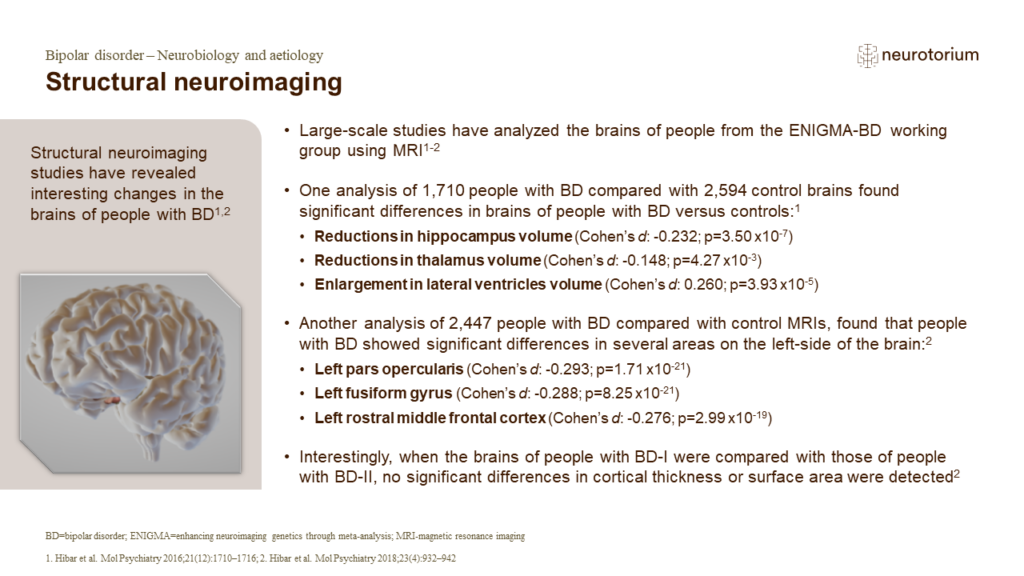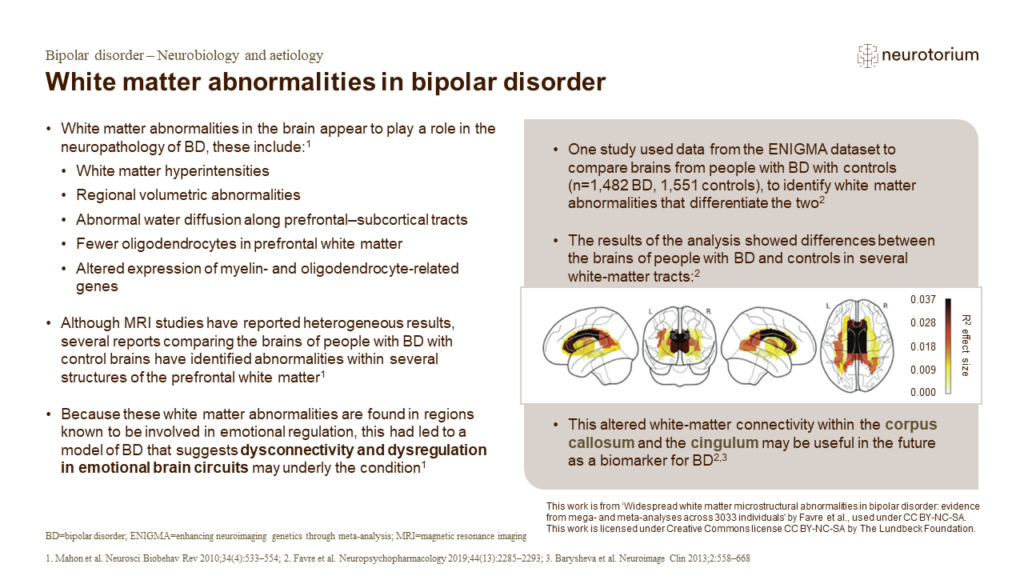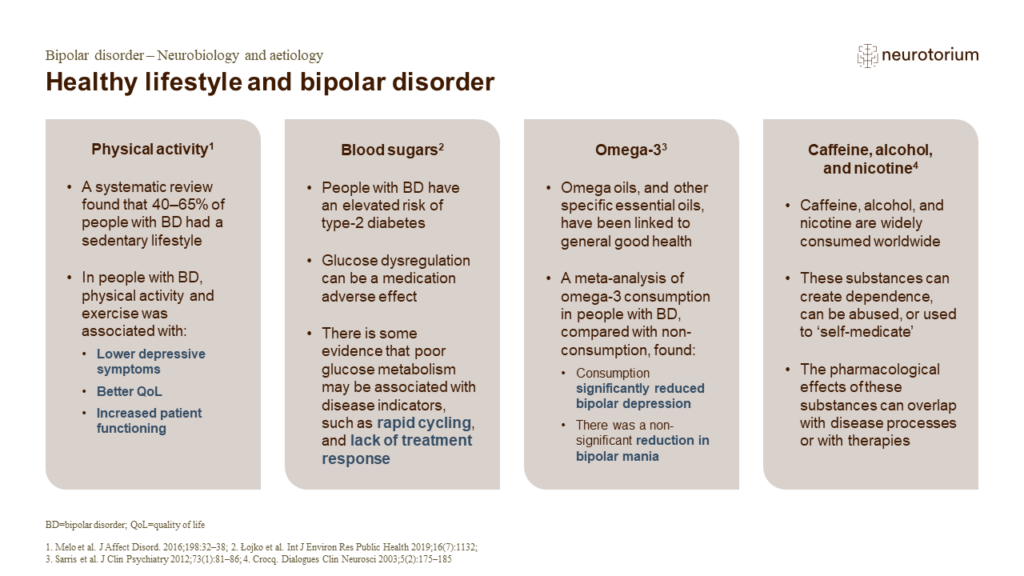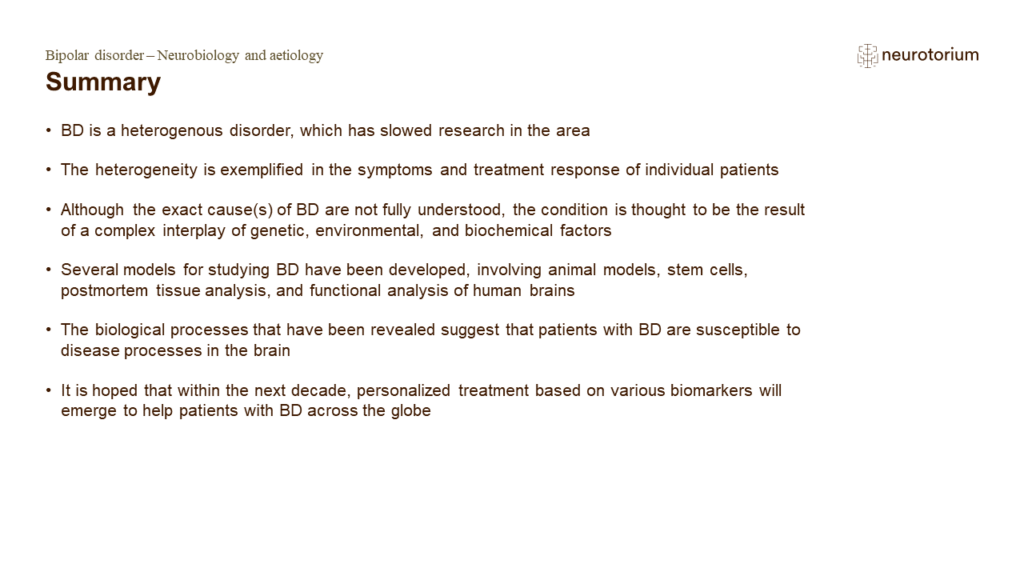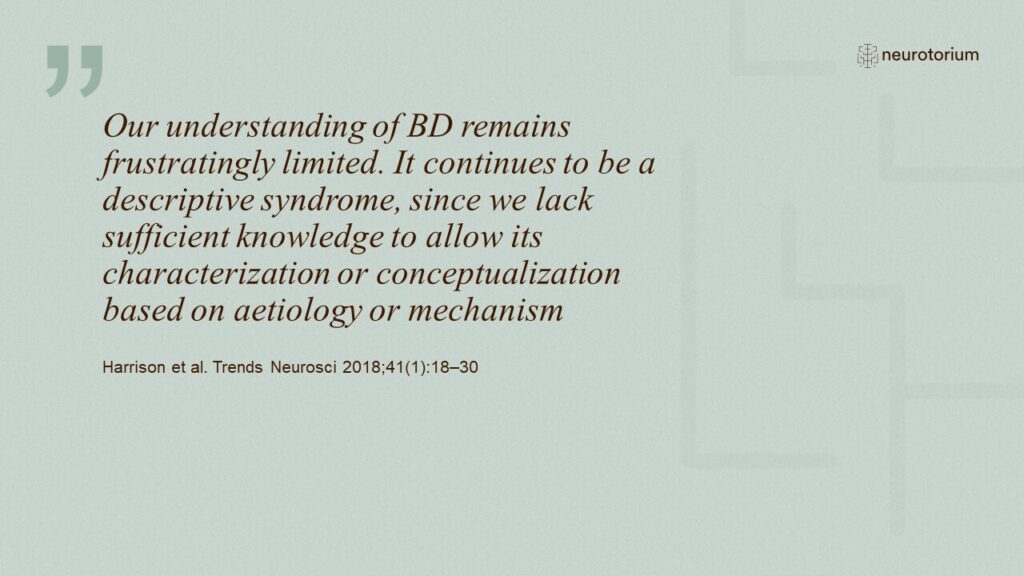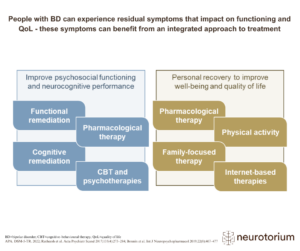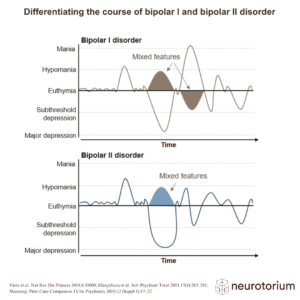Index for
slide deck
Introduction
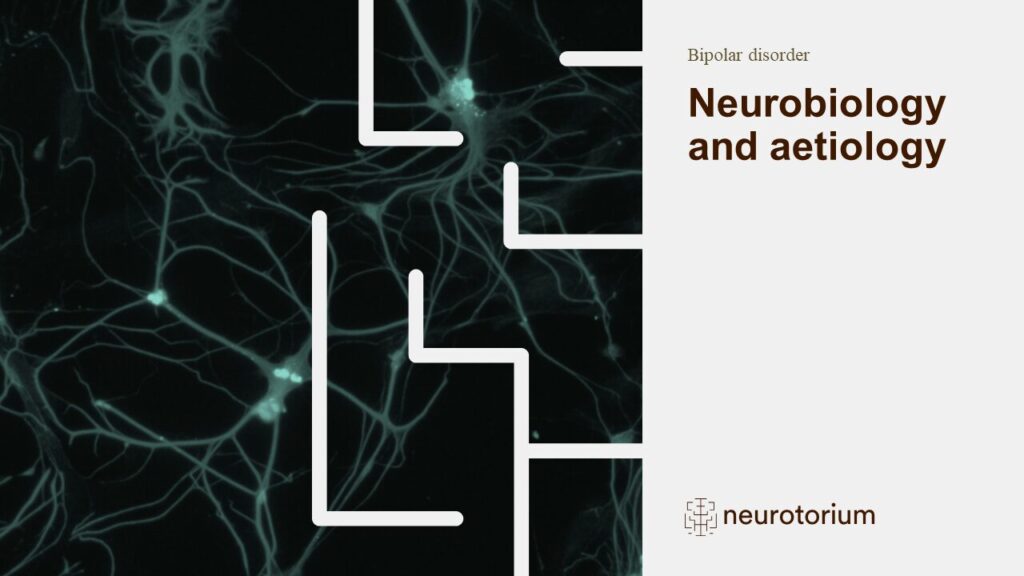
Bipolar disorder - Neurobiology and aetiology
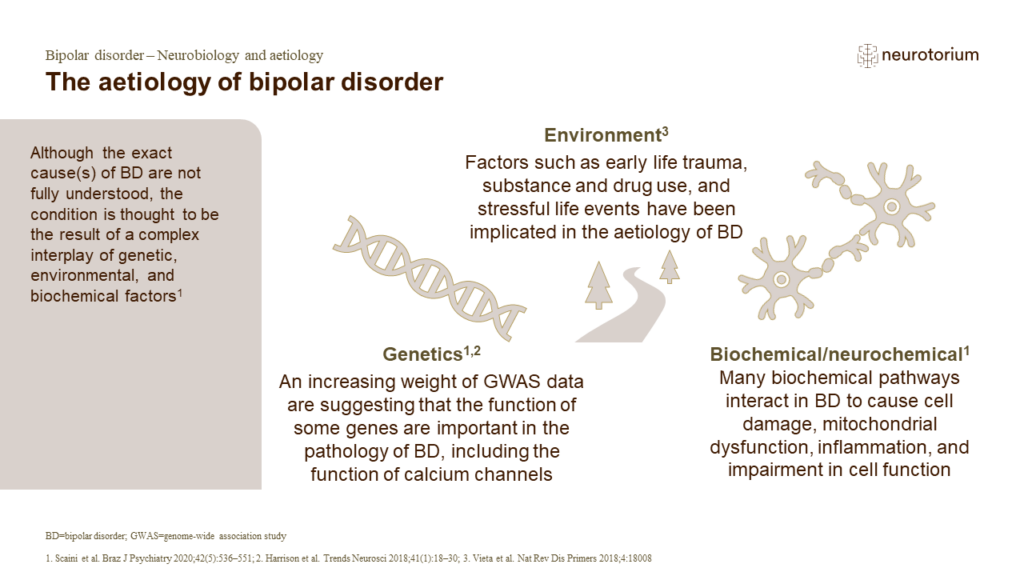
The aetiology of bipolar disorder
Bipolar disorders are characterized by biphasic mood disturbances of (hypo)manic and depressive episodes.3 Better understood now than in the past, bipolar disorder is believed to be brought about by a complex interplay of genetic, environmental, and neurological factors.1…
The genetics of bipolar disorder
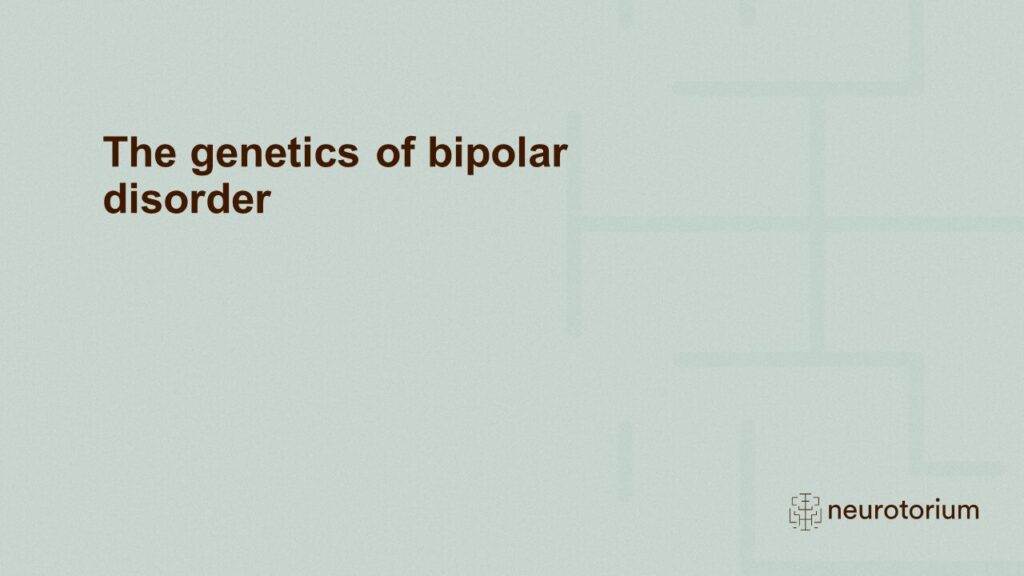
The genetics of bipolar disorder
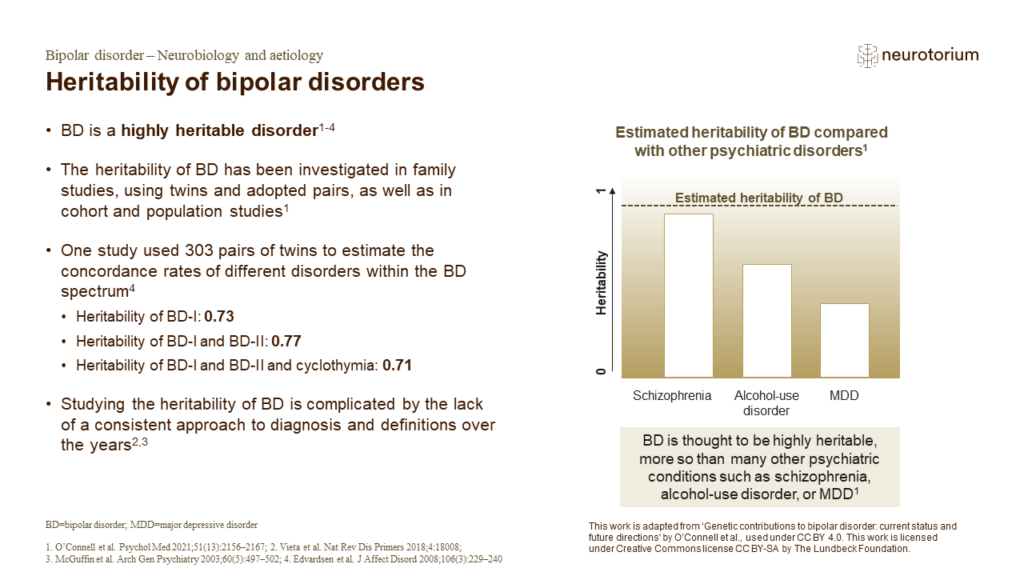
Heritability of bipolar disorders
As outlined on the slide, bipolar disorder is a highly heritable disorder.1-4 The pathology of bipolar disorder is thought to be best explained by a model that takes account of this clear genetic involvement, interacting with a person’s environment and biochemistry, altho…
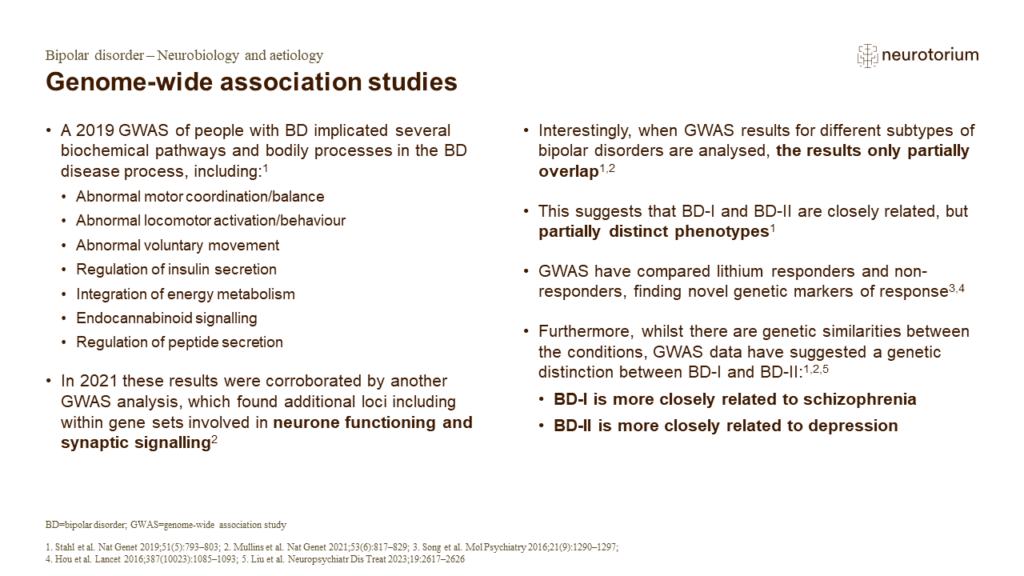
Genome-wide association studies
It was once believed that genome-wide association studies (GWAS) might unlock the secrets of disease – that harnessing the power of genetic understanding would clarify disease processes and thereby help design new treatments.6 Whilst not this Holy Grail, GWAS analyses are…
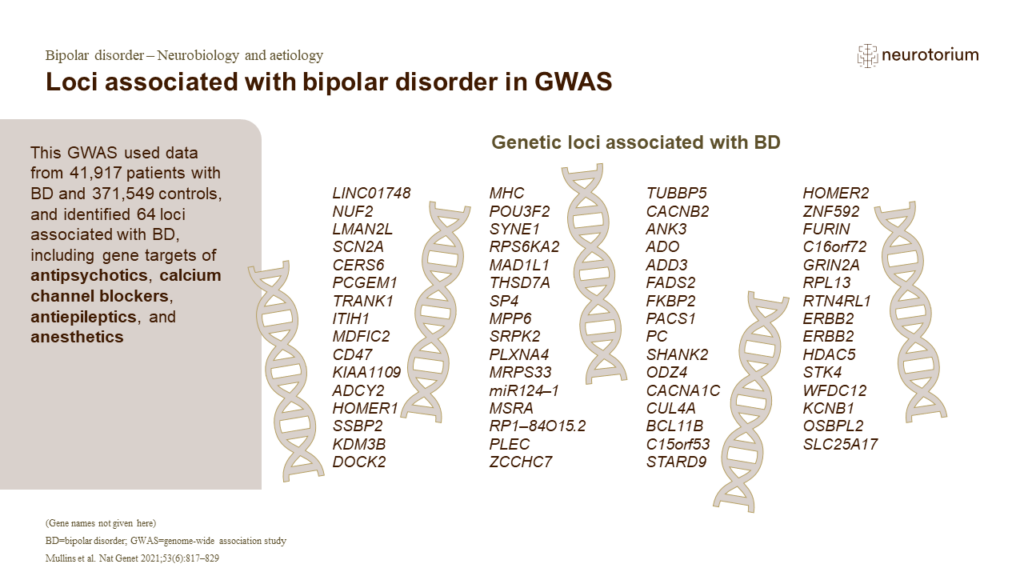
Loci associated with bipolar disorder in GWAS
The genome-wide association study (GWAS) outlined on the slide validated some previous GWAS data,2 and went further adding more potential genomic loci of interest.1 A previous GWAS had used data from 20,352 people with BD and 31,358 controls, and identified 30 loci associ…
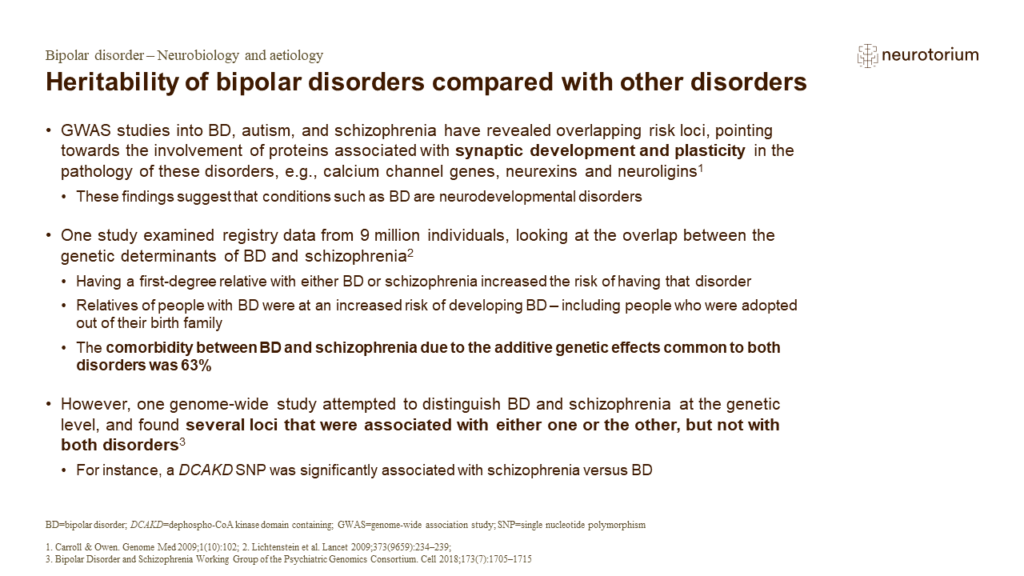
Heritability of bipolar disorders compared with other disorders
Bipolar disorder is a highly heritable condition, as are many other psychiatric disorders, such as schizophrenia.1-3 Decades of research into the genetics of disorders such as bipolar disorder and schizophrenia have identified and corroborated several genetic loci implica…
Models for studying bipolar disorder
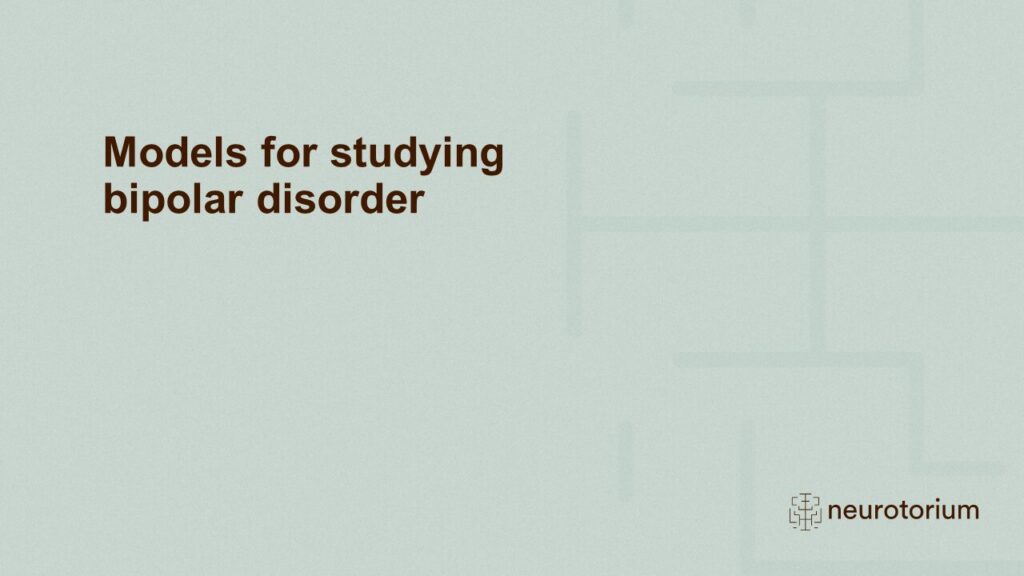
Models for studying bipolar disorder
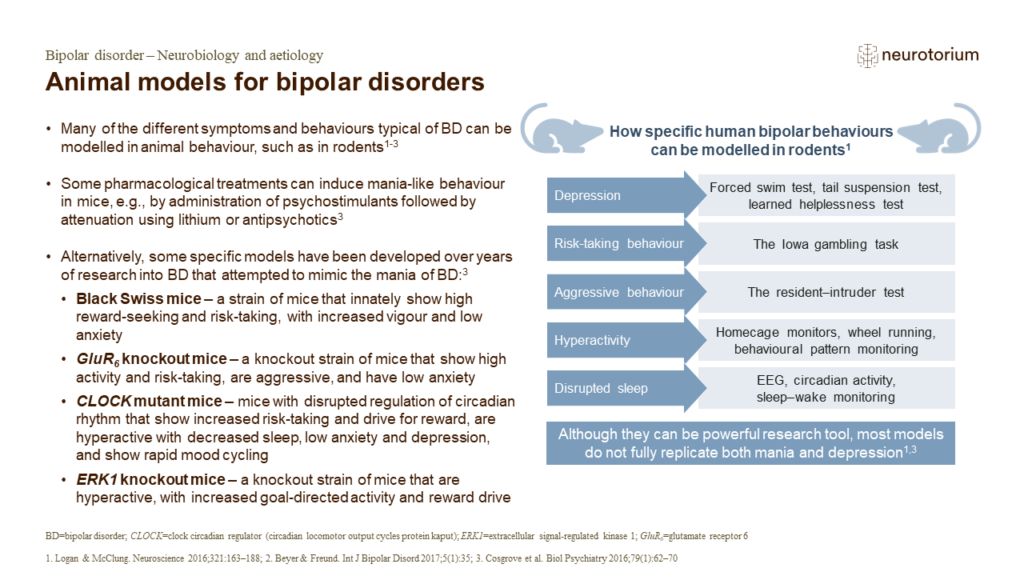
Animal models for bipolar disorders
As detailed on the slide, animal models can be used to model some of the characteristic symptoms of bipolar disorder.1-3 However, whilst useful, these models cannot fully replicate the complex behaviours of humans with bipolar disorder, and the complex genetics of bipolar…
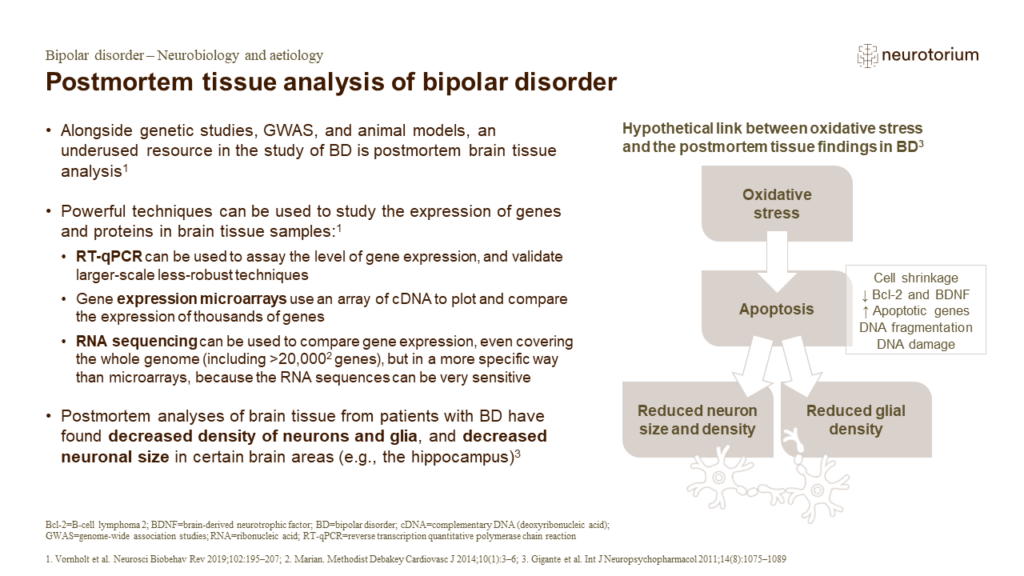
Postmortem tissue analysis of bipolar disorder
Whilst genome-wide association studies are a powerful technique, bringing into focus several genes that might be involved in the pathology of bipolar disorder, several other genetic loci identified by genome-wide studies are outside of protein-coding regions, implying som…
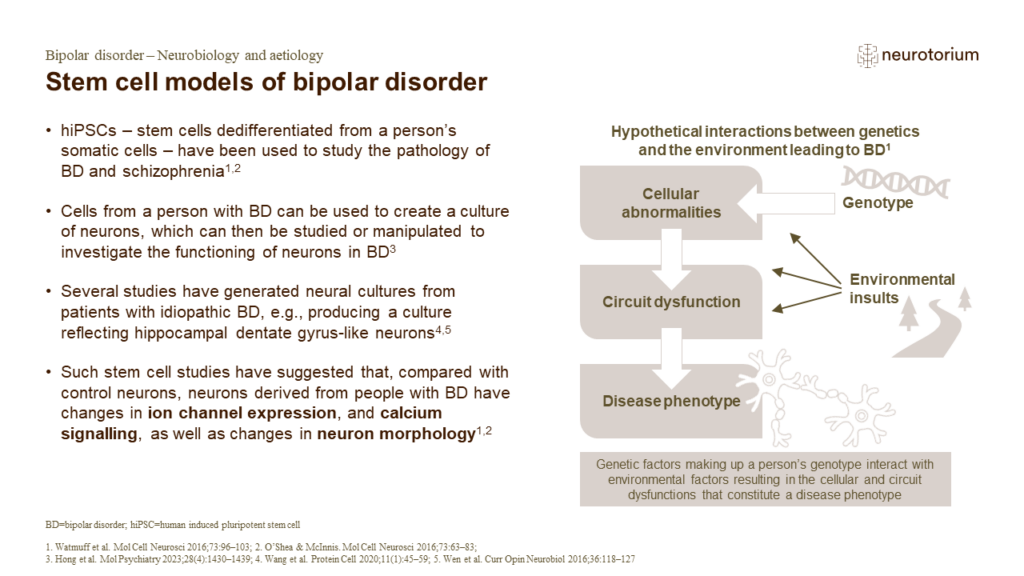
Stem cell models of bipolar disorder
Whilst human induced pluripotent stem cells (hiPSCs) are a powerful tool for interrogating the mechanics of human disease (being genetically identical to the donor’s own cells, although not mature), there are limitations to their use.3 This is because differences in the s…
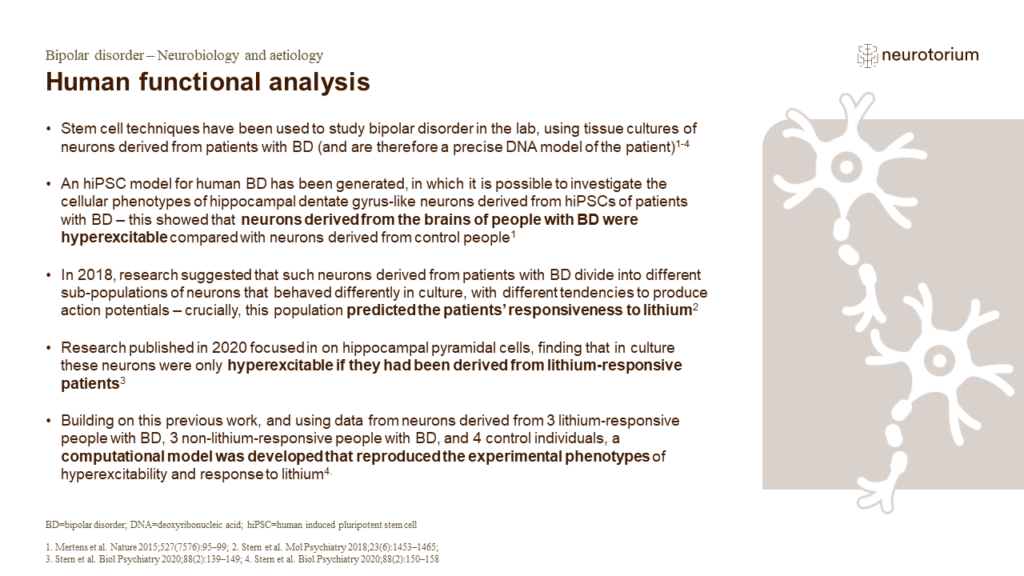
Human functional analysis
As outlined on the slide, human induced pluripotent stem cell (hiPSC) model systems have been used to great effect to study bipolar disorder, leading to some interesting insights into lithium responsiveness in people with bipolar disorder.1-4 More research is needed, usin…


